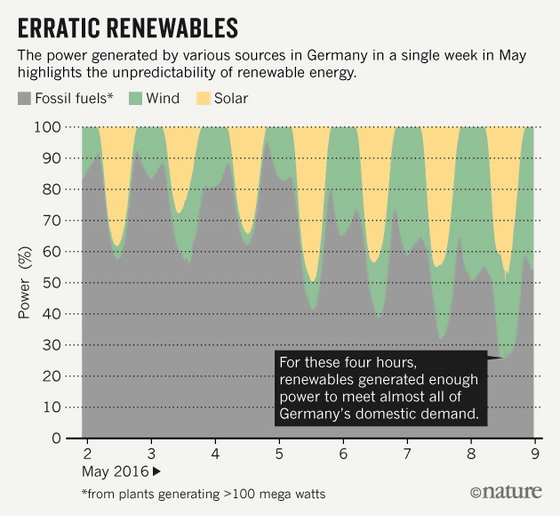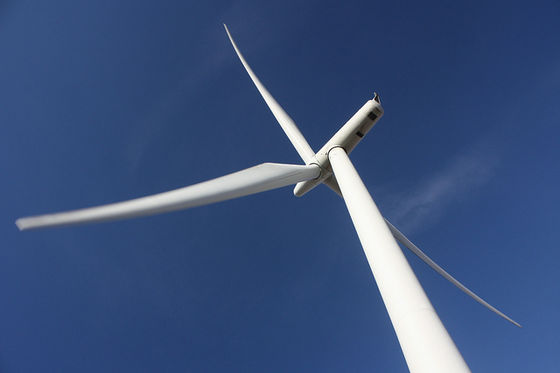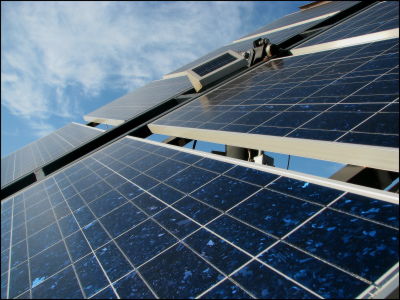The key to more efficiently utilizing renewable energy is "big data" and "machine learning"

ByTony Webster
Fossil fuels such as coal, petroleum and natural gas are used as energy resources all over the world, but the amount is limited and will be exhausted after several decades. there,Adopt biofuelWe are actively promoting the development of alternative energy such as doing, but the world's leadingRenewable energyA new initiative to make more efficient use of renewable energy "that Germany, which is the country of use, is doing attention.
Germany enlists machine learning to boost renewables revolution: Nature News & amp; Comment
http://www.nature.com/news/germany-enlists-machine-learning-to-boost-renewables-revolution-1.20251

In Germany, wind turbines for wind power generation and solar panels for photovoltaic power generation are beautifully arranged in rows. This is a landscape that clearly shows that the country of Germany is shifting from renewable energy to nuclear power generation and thermal power generation making full use of fossil fuels. Germany is the most active country to utilize renewable energy in the world, but still it seems that it can not cover all domestic power demand in the domestic market with electricity derived from natural energy such as wind and sunlight.
Therefore, meteorologists, engineers, public utilities, etc. gathered to start utilizing big data and machine learning so that renewable energy can be handled more effectively. This project is "EWeLiNE"Mr. Malte Giefeld, a physicist working at the Fraunhofer Institute, Europe's largest research institution, has been appointed as a project leader for the project leader. The goal of the project is to "utilize renewable energy more efficiently and minimize the use of fossil fuels" by operating the electric grid.
EWeLiNE - Home

The German domestic wind power generation capacity is about 45,000 megawatts, which is the third largest figure in the world after China and the United States. However, the excellent point of Germany is that we are shifting to renewable energy not only at the current level of power generation but also at a level not comparable with other countries.
In Germany, one-third of domestic electricity demand is covered by renewable energy. In addition, the German government plans to supply at least 80% of domestic electricity demand by renewable energy by 2050. The problem is that when it is calm and cloudy days, that is, when the amount of electricity generated by wind power generation or photovoltaic generation is lower than the amount of electricity demanded, the power transmission operator can estimate how much electricity is required for other power generation facilities It seems to be the point that it can be requested. Also, if the amount of electricity generated by wind power generation or photovoltaic power generation exceeds the predicted amount of electricity, the amount of electricity to be supplied from another power generation facility is instantaneous , It is also required to prevent wasteful expenses and to make effective use of renewable energy.
The graph below shows the instability of renewable energy such as wind power generation and solar power generation. In the graph, the proportion of electricity generated in Germany during the 8 days from 2 - 9 May 2016 in Germany is divided into thermal power generation (gray), wind power generation (green), solar power generation (yellow) by fossil fuel It shows. The most efficient generation of renewable energy was about 4 hours on May 8th and it was so much that 70% or more of Germany's electricity demand could be covered with wind power and solar power. However, in the time of poor power generation efficiency it is not possible to cover 10% of the total, and such variations lead to the spread of renewable energy and wasteful energy production.

If the electricity grid operator is not satisfied with the amount of renewable energy generated, it is necessary to have electricity supply from the thermal power generation facility using fossil fuel, etc. to the power grid operator. With the replenishment of this shortfall, Germany seems to pay 500 million euros (about 59 billion yen) annually. Also, even if you can generate a lot of electricity by wind power generation and solar power generation, if you receive more electricity from a thermal power generation facility, it will lead to the discharge of excess power and carbon dioxide. Meteorologist Renato Heddolln said, "Renewable energy is expanding rapidly, but there is currently no power prediction system using an appropriate database."
There are already various weather forecasting systems in the world, but for example, there is no system that can predict even a part such as "How strong wind blows on the wind turbine?" However, once such information can be predicted, it will become clear how much power can be generated by wind power generation.
In the "EWeLiNE" project where 7 million euros (about 820 million yen) is put on, three German transmission system operators "50 Hertz", "Amprion" and "TenneT" cooperate with the Ministry of Economy and Energy, We are developing a system for predicting the amount of power generation from Most of the wind turbines are equipped with a device for measuring wind speed in the center of the turbine, and solar panels are accumulated their data by installing a device for measuring sunlight intensity.
In "EWeLiNE" project, by collecting data on wind power and sunlight intensity with various atmospheric observation data, we estimate the amount of electricity generation until after 48 hours. In addition, the research team seems to be working on an attempt to improve prediction accuracy by comparing predicted data with the actual amount of power generation and machine learning. Researchers participating in the project are beginning to test the system at wind power and solar power generation facilities in Germany.

ByBruce Cowan
However, it seems that it is impossible to reflect the observation data on the power transmission operation in real time at present. However, development of a system that can analyze observed data in real time within two years and can adjust the amount of power transmission automatically is planned in the "EWeLiNE" project. There are also indications that this approach will succeed.
The American Atmospheric Research Center (NCRA) has developed a similar system since 2009, and the system can now be used in eight states in the United States. According to Xcel Energy, the utility company boasting the largest wind power generation in the United States, the mistake of the power generation forecasting system has been decreasing since 2009, and since purchasing unnecessary power from other power producers has decreased , Saving about $ 60 million a year (about 6.3 billion yen) annually.
However, it seems that NCRA's system can not be used as it is in "EWeLiNE" project. This is because weather models and weather forecast algorithms are different in USA and Germany.
Related Posts:
in Science, Posted by logu_ii







